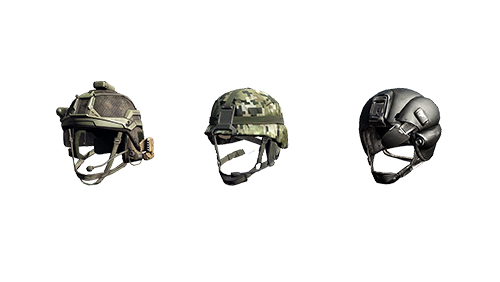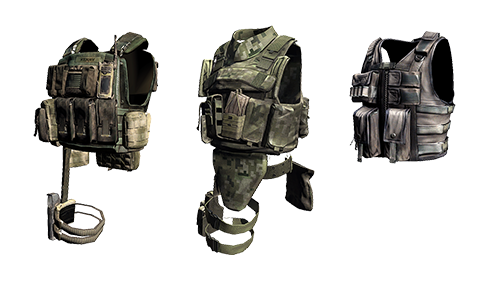UNIT: Radko Voda, Designer, Sandbox Design Dept.
TO: Arma 3 Dev-Branch Users
OPSUM: Soldier protection in Arma 3: recent changes, future progress and what might save your life.
EVALUATION
One of the most significant recent changes in Arma 3 has been the gradual introduction of improvements to Soldier Protection. The goal of the work is quite simple. We wish to bring more meaningful choices to our protective equipment, not only in terms of different weights and capacities, but also protection levels against various threats. However, because changes to this feature can have profound impacts upon the overall gameplay, we want to share our general design objectives, describe the current state and outline plans for future progress.
SITUATION
Common sense would suggest that the term 'Soldier Protection' describes the gear (vests, helmets, etc.) that protects the soldiers from harm. While that's roughly correct, a more precise definition - in the context of our game - would assert that it deals with all parameters responsible for affecting the damage mechanics calculating a soldier's state of health. Essentially, we are not only dealing with equipment, but with changes to soldiers and weapons themselves, affecting both configuration parameters and actual object data.
At the time of full release we dealt with a soldier and his equipment as 'two sides of the same coin'; the protection parameters were set up together for both the soldier of a predefined class and his equipment. In effect, the actual protection of soldiers stemmed from their predefined classes, rather than actual equipment. This approach offered a basic, satisfactory level of gameplay, which was simple to test and build content around.
MISSION
However, the underlying systems offered greater potential. In the intermediary period between campaign episodes we began to experiment with adding greater depth to Soldier Protection. After few initial missteps, we shifted our focus away from the more radical changes in favor of improving the feature more gradually in a manageable, stable fashion. Over Christmas, for example, we became aware that the state wasn't ideal and we'd like to apologise for any headaches this may have caused!
So far, we've tried to make individual items perform more closely to real life expectations and provide each faction with a more characteristic identity; in effect, creating differences between individual soldiers and across each faction. In addition, differences between various bullet calibers from different distances and angles are also more obvious. The actual effects of firepower now tend to be less generic and more dependent on various, yet nonrandom factors and specific circumstances.
NATO possess the most advanced plate carriers, which offer the best protection levels in-game, but are also the heaviest and only with moderate capacity for equipment. They come in several variants, diverse in their weight, capacity and protection level:
-
Tactical Vest offers limited capacity and only the most basic bullet protection, but is quite light.
-
Light Rig has medium capacity, offers mediocre bullet protection and is moderately heavy.
-
Rig offers slightly better bullet protection at the cost of lesser capacity and more weight.
-
GL Rig is grenadier variant with improved explosive protection, but only with mediocre bullet protection, lesser capacity and more weight.
-
Spec Rig is a heavy variant simulating additional ceramic plates, with even more limited capacity and very high weight, which do offers the best bullet protection available.
CSAT generally sacrifice solid chest protection for lesser weight and thus higher mobility. For protection they rely mostly on more advanced uniforms, which offer better protection to their extremities, such as more advanced helmets.
- Their harnesses provide the best ratio between weight and capacity in-game.
- GL variant of harness provides certain degree of protection against explosives, but is quite heavy.
- Tactical Vest used by few units offers limited capacity and only the most basic bullet protection, but is quite light and in concordance with their advanced uniforms it actually offers reasonably mediocre protection level.
The AAF's greatest advantage is that their vests offer a balance between protection, weight and capacity. The obvious drawback is that their equipment does not excel in any particular area.
By simulating this aspect more accurately - differences in protection stemming from different gear - we hope to offer players more interesting choices and more authentic gameplay. With the help of the community reporting issues and providing direct feedback, we're trying to address all remaining discrepancies between this design, fluent gameplay and our focus on authenticity. Keeping the game playable and enjoyable is, of course, our first and foremost priority.
EXECUTION
Looking ahead, we believe that there is still space left for further improvements in this area; however, such work demands new technologies to further simulate equipment protection and, currently, there are several significant roadblocks - chiefly regarding performance - in our path. Another important - yet somewhat indirect change - will be the gradual introduction of more polished fatigue mechanics. We hope that it will improve the necessity of reasonable decision-making between protection and mobility. We've also identified more complex improvements, but we must first make sure that these will be reasonable to implement properly.
Overall, we hope that these little steps of progress will help polish our infantry gameplay. Thanks for your attention and any further feedback on this topic. It's really much appreciated!

